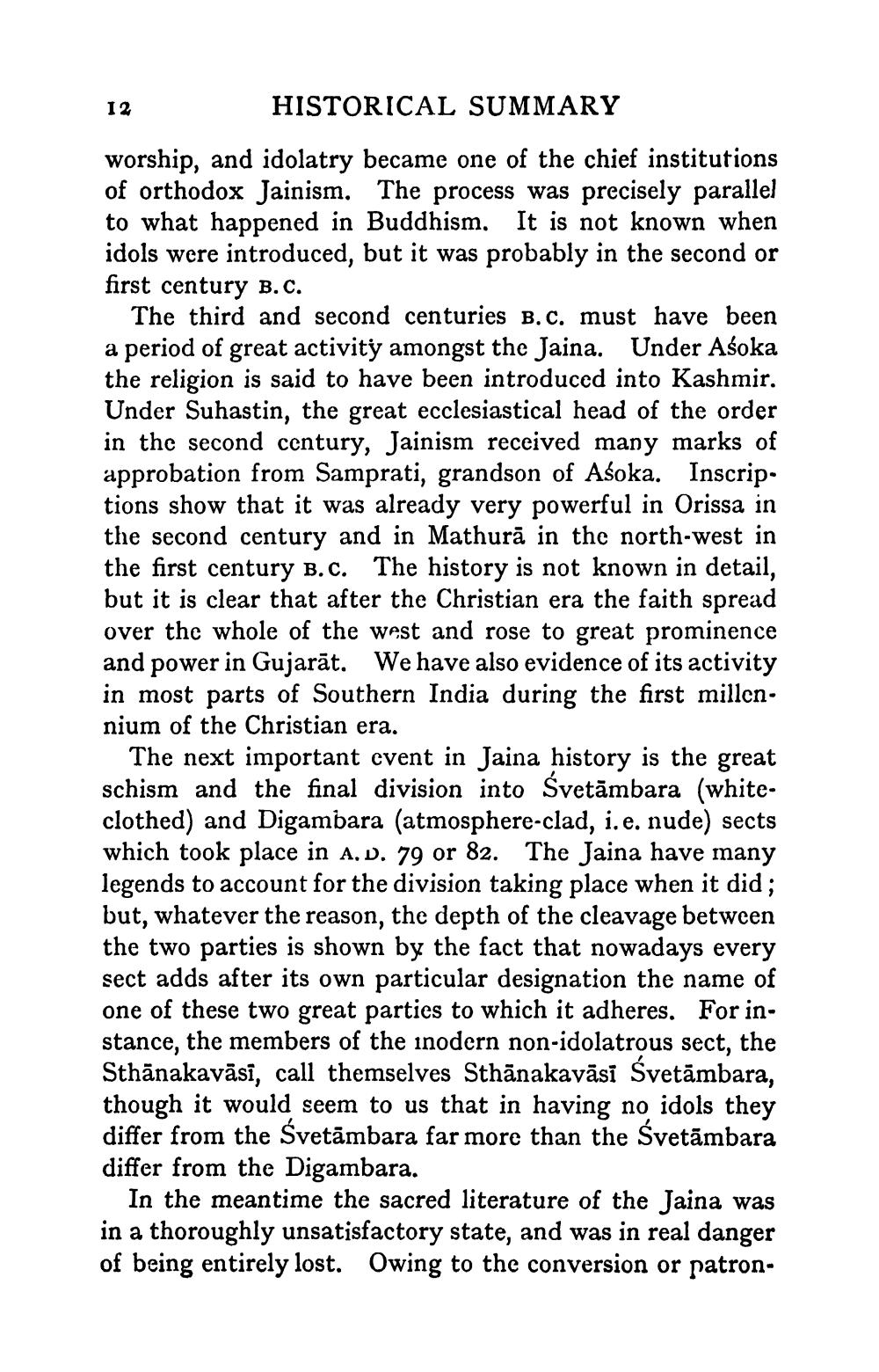________________
I 2
HISTORICAL SUMMARY
worship, and idolatry became one of the chief institutions of orthodox Jainism. The process was precisely parallel to what happened in Buddhism. It is not known when idols were introduced, but it was probably in the second or first century B.C.
The third and second centuries B.C. must have been a period of great activity amongst the Jaina. Under Aśoka the religion is said to have been introduced into Kashmir. Under Suhastin, the great ecclesiastical head of the order in the second century, Jainism received many marks of approbation from Samprati, grandson of Asoka. Inscriptions show that it was already very powerful in Orissa in the second century and in Mathurā in the north-west in the first century B.C. The history is not known in detail, but it is clear that after the Christian era the faith spread over the whole of the west and rose to great prominence and power in Gujarāt. We have also evidence of its activity in most parts of Southern India during the first millennium of the Christian era.
The next important event in Jaina history is the great schism and the final division into Śvetāmbara (whiteclothed) and Digambara (atmosphere-clad, i.e. nude) sects which took place in A.D. 79 or 82. The Jaina have many legends to account for the division taking place when it did; but, whatever the reason, the depth of the cleavage between the two parties is shown by the fact that nowadays every sect adds after its own particular designation the name of one of these two great parties to which it adheres. For instance, the members of the inodern non-idolatrous sect, the Sthānakavāsi, call themselves Sthānakavāsi Svetāmbara, though it would seem to us that in having no idols they differ from the Svetāmbara far more than the Svetāmbara differ from the Digambara.
In the meantime the sacred literature of the Jaina was in a thoroughly unsatisfactory state, and was in real danger of being entirely lost. Owing to the conversion or patron




